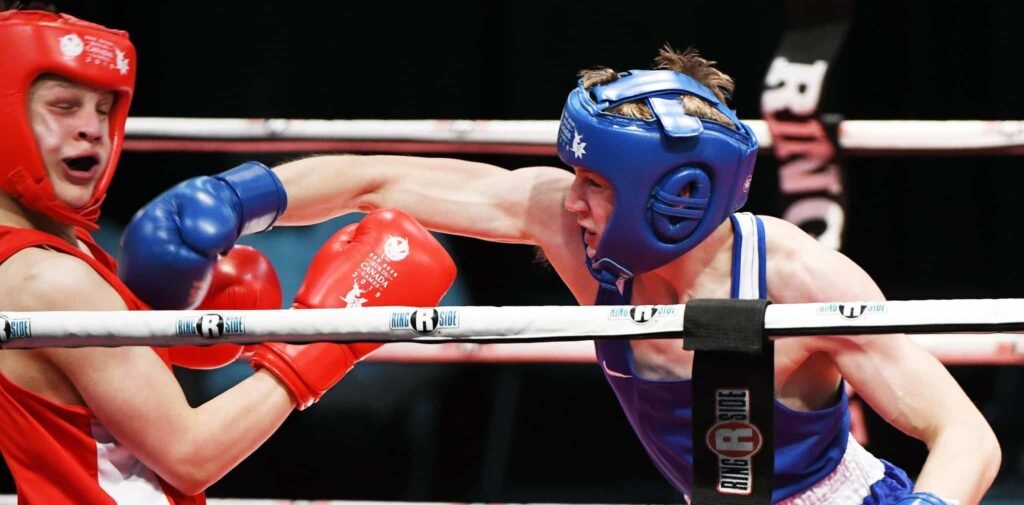
What are the most important Boxing rules?
One of the ancient martial arts sports in human history is boxing, a sport that mixes mental resilience, tactical skill, and physical strength. Its roots can be found in history, when it was a component of military training in many different nations. Boxing has been one of the most popular forms of sports in the world over time, and it is subject to strict laws and standards to guarantee competition safety and fairness. In addition to being a test of physical strength, boxing tests strategic thinking and the ability to adjust to unpredictable situations within the ring. Despite being known for violent combat and aggression, boxing is governed by precise regulations meant to safeguard the competitors and uphold the fairness of the contests. The boxing rules are made to organize fights so that every boxer has an equal chance of winning while minimizing the risk of injury. These regulations address everything from the scoring system and approved or forbidden blows to the protocols to be followed in the event of a foul. Find out more about boxing rules and the characteristics of elite fighters at Riyadh Combat Club
Characteristics of a Boxer
- Physical fitness: Because boxing classes require a great deal of strength, a boxer needs to be really physically fit. They must be able to move quickly and efficiently without being tired, and they must be able to stay strong for extended rounds.
- Speed and flexibility: While speed helps a boxer deliver accurate and powerful punches, flexibility enables a fighter to move fast and avoid blows. A boxer needs to be swift enough to avoid attacks and able to make quick decisions.
- Psychological resilience: Boxing demands mental strength in its practitioners. During fights, a boxer may encounter stressful situations and needs to be able to remain calm, focused and provide their best effort even under the most challenging conditions.
- Strategic thinking: A great boxer is defined by more than simply physical strength, tactical intelligence is essential. In order to win, a boxer needs to be capable of reading their opponent’s movements, spotting their flaws, and quickly modifying their approach.
- Emotional regulation: Boxing requires the capacity to keep calm under stress. Anger is one of the emotional responses that might result in errors that could cost a match. To remain focused and perform well, a boxer needs to remain composed at all times.
- Physical strength: One essential quality for a boxer is muscular strength. Strong muscles allow a fighter to throw punches with greater force, which gives an advantage in face-to-face combat.
- Coordination and balance: In boxing, keeping physical balance is essential. A boxer’s in-ring performance is significantly improved by synchronized motions, whether offensive or defensive, and being able to maintain balance while moving quickly.
Boxer’s weight and classifications
- Boxing weight groups: Based on their physical weight, boxers are categorized into particular weight groups. Lightweight, middleweight, heavyweight, and various classes from extremely light to heavyweight are among these divisions.
- The value of weight in games: Weight has a big impact on a boxer’s style and performance; it’s not just a body measure. While fighters in heavier divisions have greater punching power, those in lesser weight classes are usually faster and more flexible. Therefore, according to official standards, a boxer has to meet the minimum weight requirement for a category before battle.
- Weigh-ins and physical challenges: A boxer’s weight is formally determined through a procedure called the weigh-in, which takes place just prior to the fight in most major championships. A boxer may be penalized or possibly disqualified if their weight is over the limit for their category. To get to their desired weight in time for competition, many boxers adhere to intense diets and rigorous training programs.
- Weight group transitions: In order to take on new challenges and chances, several boxers decide to switch between weight classes throughout their careers. Depending on the requirements of the new category, switching to another weight group usually requires changing one’s fighting style, such as focusing more on strength or speed.
- Professional boxers’ ranking: Professional boxers are ranked all over the world according to how well they perform in matches. The battle is even more difficult because some classifications, like heavyweight, are more popular than others. Rankings are based on each boxer’s total points, title victories, and previous results.
The ring and equipment used in boxing.
The battle ring.
- Boxing events take place within a square shaped area called “the ring”. It is fully surrounded by safety barriers and has four rope-enclosed sides. Although the size of the ring varies per category, it is typically between 6 and 7 meters on each side.
- The Surface: Typically, the ring has a flat surface that is supported by a layer of impact-absorbing materials like rubber. This helps avoid major harm and guarantees protecttion from injuries in the case of a fall.
- The Ropes: Three parallel lines of ropes run along each of the ring’s four sides. During a battle, these ropes keep the fighters inside the ring and define the limits of the fighting area.
Boxer’s personal kit.
- Boxing gloves: One of the critical gear items for boxers is gloves. They are created from materials that protect the boxer’s hands and minimize the possibility of injury from punches. The gloves have support inside to absorb shocks, and their weight varies according to the weight range.
- Mouth guard: The mouthguard relieves the impact of hits to the mouth and gums and helps shield teeth and mouth from heavy impacts.
- Head safety or helmet: Helmets are worn in some battles, particularly during training or for younger fighters, to protect the head from severe injuries that could result in concussions or other brain injuries.
- Shin guard: Shin guards are sometimes worn by boxers to offer extra defense against hits to the legs.
Training gear.
- Boxing bags: These are used to practice accurate and heavy punches. Depending on the kind of training and the boxer’s target level, they are available in several weights and sizes.
- Rubber balls: Using exercises that develop hand-eye coordination, these balls help boxers punch faster and more accurately.
- Ropes: Boxers can boost their foot speed, balance, and physical conditioning by jumping rope.
Timing and recording tools.
The duration between rounds is controlled by timing devices or advanced electronic devices. Additionally, there is a unique scoring system that logs all of the fight’s information, including the number of successful punches and the length of each round.
Fundamental Boxing Rules.
Duration and rounds:
- Depending on the tournament rules or weight group, the number of rounds in a boxing battle is predetermined.
- There are usually 10 to 12 rounds in professional matches, however, the number is less in friendly matches or for amateurs.
- Three minutes are allowed for each round, with one minute of break in between.
Legal punches:
Boxers are only permitted to punch the opponent’s face and body while wearing gloves. However, hitting is absolutely prohibited in certain places, such as..
The lower back or the back of the head.
Using the gloves’ upper portion.
Striking the groin or beneath the belt.
Using open gloves or punching with fingertips.
Scoring system:
- Points are awarded according to how efficiently punches were thrown, taking into account both accuracy and force. Depending on its force and effect, each punch that strikes the target earns one or more points. A boxer’s performance in agility, defense, and ring control also earns them extra points.
- The judges decide who wins based on the overall number of points earned if there isn’t a clear winner at the end of the rounds.
Stopping due to an Injury
- The referee has the right to end the fight and announce a winner as per the doctor’s evaluation if one of the competitors is injured and cannot continue.
- By default, the injured boxer is declared the winner if the injury was caused by an illegal strike.
Disqualification or ban:
The referee has the authority to stop a match and disqualify a boxer who repeatedly uses prohibited practices or intentionally strikes after the referee blows his whistle, among other violations. A fight can be automatically lost due to fouls such as utilizing open hands or performing illegal punches.
Authority of the Referee:
The referee’s role is crucial in controlling the progress of the game. They keep an eye on the action, judge when to stop or continue the fight, and decide if a punch is permitted or whether a boxer has fulfilled the requirements for victory.
Winning the match:
There are multiple methods for a boxer to win a fight:
- Knockout (KO): When a boxer is struck so hard that they lose consciousness or fail to stand up before the referee counts to ten.
- Technical Knockout (TKO): When a boxer is judged not fit to continue by the referee or ringside physician.
- Winning by Points: The victor is determined by the total number of points earned at the end of the fight; the boxer with the highest score is announced the winner if neither fighter is knocked out or hurt enough to end the match.
Frequently Asked Questions
Yes, boxers have the freedom to move between weight classes, but they still have to adhere to the weight requirements set down for each competition. In order to appropriately alter their weight, they frequently need to follow intense workout and diet programs.
From lightweight to heavyweight, boxers are divided into numerous weight groups. A boxer must stay within the criteria of their category during the fight, which is based on their actual weight.
Indeed, there are numerous regulations in place to safeguard boxers, including ones that forbid strikes to specific body parts like the lower back or back of the head. To lower the chance of severe injury, safety gear like mouthguards and gloves is also required.
If neither boxer is knocked down, the winner is decided by points, if one fighter is unable to stand up following a decisive strike, the winner is decided by knockout. If an injury prevents one of the fighters from continuing the match, it is called a technical knockout.
A boxer is said to be knocked out if they are hit so hard that they lose consciousness or are unable to get up up before a judge counts to ten. This causes the fight to finish right away, giving the other boxer the victory.
There is a break of one minute in between each round. During this pause, fighters can regain their energy and get coaching tips.
